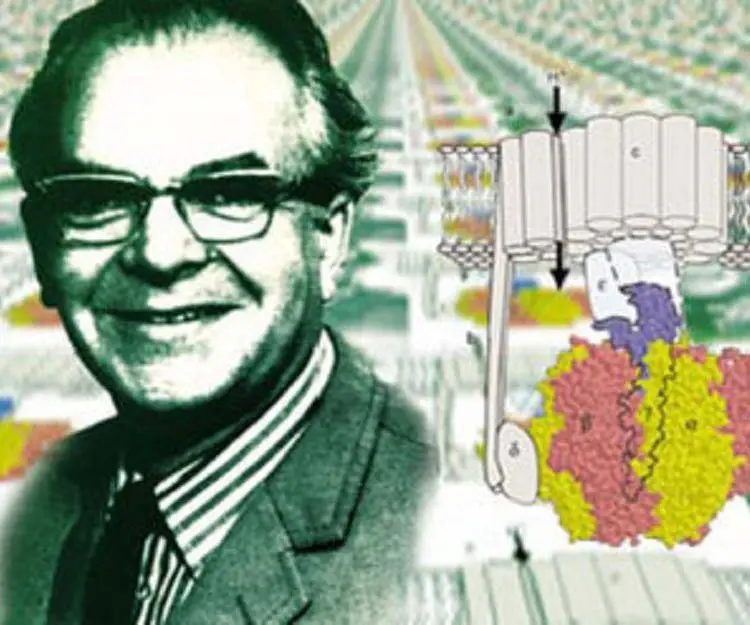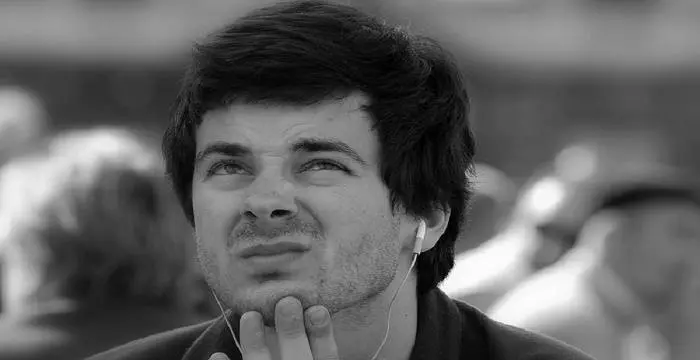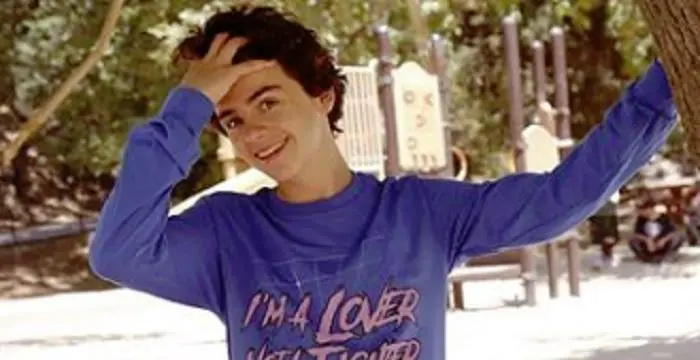
Peter Mitchell - Biochemists, Family and Childhood
Peter Mitchell's Personal Details
Peter Mitchell was a British chemist who won the 1978 Nobel Prize for Chemistry
| Information | Detail |
|---|---|
| Birthday | September 22, 1920 |
| Died on | April 10, 1992 |
| Nationality | British |
| Famous | Scientists, Chemists, Biochemists |
| Spouses | Eileen Rollo (m.1944–1954; divorced), Helen Robertson (m. 1958) |
| Birth Place | Mitcham, Surrey, England |
| Gender | Male |
| Father | Christopher Gibbs Mitchell |
| Mother | Kate Beatrice Dorothy |
| Sun Sign | Virgo |
| Born in | Mitcham, Surrey, England |
| Famous as | Biochemist |
| Died at Age | 71 |
// Famous Scientists
Juliane Koepcke
Juliane Koepcke is a German-Peruvian biologist, who was the lone survivor among the 92 passengers and crew of the ill-fated LANSA Flight 508 that crashed in the Peruvian rainforest on 24 December 1971. Know more about her life in this biography.
Henry Cavendish
Henry Cavendish was a theoretical chemist and physicist, renowned for discovery of hydrogen and calculation of the mass of earth. To know more about his childhood, profile, timeline and career read on
Konstantin Tsiolkovsky
Konstantin Tsiolkovsky was a Russian rocket scientist and a pioneer of astronautics. This biography provides detailed information about his childhood, family, personal life, career, achievements, etc.
Peter Mitchell's photo
Who is Peter Mitchell?
Peter Mitchell was a British chemist who won the 1978 Nobel Prize for Chemistry for his discovery of the chemiosmotic mechanism of ATP synthesis. His work in the theoretical approaches in biochemistry which led to the development of his chemiosmotic theory paved the way for the development of the field of bioenergetics. The son of a civil engineer, he started displaying his love for science at a young age. However, as a school student he tended to ignore subjects like history and geography though he excelled in mathematics and physics. He failed the scholarship entrance examination for Cambridge, but ultimately managed to get admitted to Jesus College, Cambridge, on the intervention of his headmaster, Christopher Wiseman. Even in college he did not give a stellar performance though he displayed great potential in biochemistry and thrived under the guidance of his mentor, Frederick Gowland Hopkins. He eventually began his academic career and went on to set up a biochemical research unit, called the Chemical Biology Unit, at the University of Edinburgh. In the 1960s, he embarked on a program of research on chemiosmotic reactions along with his colleagues which eventually earned him the Nobel Prize.
// Famous Chemists
Henry Cavendish
Henry Cavendish was a theoretical chemist and physicist, renowned for discovery of hydrogen and calculation of the mass of earth. To know more about his childhood, profile, timeline and career read on
Walter Kohn
Nobel Laureate Walter Kohn was an Austrian-born American theoretical chemist and physicist. Check out this biography to know about his childhood, life, achievements, works & timeline.
Jabir Ibn Hayyan
Jabir Ibn Hayyan was a medieval era polymath. Check out this biography to know about his life, works and achievements.
Childhood & Early Life
Peter Dennis Mitchell was born on September 29, 1920, in Mitcham, Surrey, England to Christopher Gibbs Mitchell, a civil servant, and Kate Beatrice Dorothy (née) Taplin.
He received his primary education from local grammar schools and then went to the Queen’s College. He loved science and mathematics from a young age and excelled in these subjects. However, he ignored subjects like history and geography due to which he was unable to get excellent grades.
He appeared for the scholarship entrance examination at Cambridge but was unable to clear it. His headmaster Christopher Wiseman, who recognized Mitchell’s talent and potential, intervened and helped the young man get into Jesus College, Cambridge for the fall of 1939.
He studied physics, chemistry, physiology, and biochemistry for his Tripos I (first two years) and then biochemistry for his Tripos II (third year). He received second-class marks on his examinations but flourished in the Biochemistry Department under the guidance of Frederick Gowland Hopkins.
At Cambridge, he was appointed at a research post in the Department of Biochemistry in 1942 and performed war-related research under the supervision of James Danielli.
Career
While working towards the completion of his doctorate in 1950, Peter Mitchell was appointed the Demonstrator at the Department of Biochemistry by the new head of the department, Frank Young. Mitchell was awarded a Ph.D. in early 1951 for his work on the mode of action of penicillin.
As a demonstrator, he worked in the Sub-Department of Microbiology. In 1955, he was invited by Professor Michael Swann to set up and direct a biochemical research unit, called the Chemical Biology Unit, in the Department of Zoology, Edinburgh University. Mitchell accepted the offer.
In 1961, he was appointed to a Senior Lectureship at the Edinburgh University and was promoted to a Readership the next year. Around this time, he started suffering from acute gastric ulcers which greatly interfered with his ability to do research. He took a leave of absence and resigned in 1963.
He did not perform any research from 1963 to 1965 but supervised the restoration of a Regency-fronted Mansion, known as Glynn House, at Cornwall. He redesigned a major part of it as a research laboratory and in collaboration with a former colleague, Jennifer Moyle, founded a charitable company known as Glynn Research Ltd. Mitchell became its director of research in 1964.
It was during the 1960s that he began his landmark research on chemiosmotic reactions and reaction systems. Years of intensive work in collaboration with his colleagues led to the discovery of the mechanism of ATP synthesis.
At that time, the biochemical mechanism of ATP synthesis by oxidative phosphorylation was unknown and it was Mitchell who provided the chemiosmotic hypothesis which became the basis for understanding the actual process of oxidative phosphorylation.
His interest in studying the communication between molecules led to an interest in the problems of communication between individual people in civilized societies. On the basis on his own experiences, he deduced that smaller organizations in general are more effective than larger organizations for many purposes. Mitchell retired as director of research from Glynn in 1985.
Major Works
Peter Mitchell performed vital research in biochemistry and revolutionized the field with his discovery of the chemiosmotic mechanism of ATP synthesis. His chemiosmotic hypothesis provided the basis for understanding the actual process of oxidative phosphorylation.
Awards & Achievements
He was awarded the Nobel Prize in Chemistry in 1978 "for his contribution to the understanding of biological energy transfer through the formulation of the chemiosmotic theory.
In 1981, Mitchell was honored with the Copley medal "In recognition of his distinguished contribution to biology in his formulation and development of the chemiosmotic theory of energy transduction."
Personal Life & Legacy
Peter Mitchell’s first marriage was to Eileen Rollo in 1944. They couple had one daughter. The marriage, however, began to unravel within years and ended in divorce in 1954.
His second wife was Helen Robertson whom he wed in 1958.
He suffered from deafness and complications from a botched up surgery during his later years and died on 10 April 1992, at the age of 71.
// Famous Biochemists
Robert Huber
Robert Huber is a German biochemist and Nobel Laureate. Check out this biography to know about his childhood, life, achievements, works & timeline.
Charles Best
Charles Best was a great scientist and a renowned physiologist who is remembered for being the co-discoverer of insulin. Read this biography to learn about his profile, childhood, life and timeline.
Isaac Asimov
Isaac Asimov was an American professor of biochemistry and a renowned author of science fiction and popular science books. Read this biography to know more about his life.
Peter Mitchell's awards
| Year | Name | Award |
|---|---|---|
Other | ||
| 0 | FRS (1974) | |
| 0 | Nobel Prize in Chemistry (1978) | |
| 0 | Copley Medal (1981) | |
Peter Mitchell biography timelines
- // 29th Sep 1920Peter Dennis Mitchell was born on September 29, 1920, in Mitcham, Surrey, England to Christopher Gibbs Mitchell, a civil servant, and Kate Beatrice Dorothy (née) Taplin.
- // 1939He appeared for the scholarship entrance examination at Cambridge but was unable to clear it. His headmaster Christopher Wiseman, who recognized Mitchell’s talent and potential, intervened and helped the young man get into Jesus College, Cambridge for the fall of 1939.
- // 1942At Cambridge, he was appointed at a research post in the Department of Biochemistry in 1942 and performed war-related research under the supervision of James Danielli.
- // 1944 To 1954Peter Mitchell’s first marriage was to Eileen Rollo in 1944. They couple had one daughter. The marriage, however, began to unravel within years and ended in divorce in 1954.
- // 1950 To 1951While working towards the completion of his doctorate in 1950, Peter Mitchell was appointed the Demonstrator at the Department of Biochemistry by the new head of the department, Frank Young. Mitchell was awarded a Ph.D. in early 1951 for his work on the mode of action of penicillin.
- // 1955As a demonstrator, he worked in the Sub-Department of Microbiology. In 1955, he was invited by Professor Michael Swann to set up and direct a biochemical research unit, called the Chemical Biology Unit, in the Department of Zoology, Edinburgh University. Mitchell accepted the offer.
- // 1958His second wife was Helen Robertson whom he wed in 1958.
- // 1961 To 1963In 1961, he was appointed to a Senior Lectureship at the Edinburgh University and was promoted to a Readership the next year. Around this time, he started suffering from acute gastric ulcers which greatly interfered with his ability to do research. He took a leave of absence and resigned in 1963.
- // 1963 To 1965He did not perform any research from 1963 to 1965 but supervised the restoration of a Regency-fronted Mansion, known as Glynn House, at Cornwall. He redesigned a major part of it as a research laboratory and in collaboration with a former colleague, Jennifer Moyle, founded a charitable company known as Glynn Research Ltd. Mitchell became its director of research in 1964.
- // 1978He was awarded the Nobel Prize in Chemistry in 1978 "for his contribution to the understanding of biological energy transfer through the formulation of the chemiosmotic theory.
- // 1981In 1981, Mitchell was honored with the Copley medal "In recognition of his distinguished contribution to biology in his formulation and development of the chemiosmotic theory of energy transduction."
- // 1985His interest in studying the communication between molecules led to an interest in the problems of communication between individual people in civilized societies. On the basis on his own experiences, he deduced that smaller organizations in general are more effective than larger organizations for many purposes. Mitchell retired as director of research from Glynn in 1985.
- // 10th Apr 1992He suffered from deafness and complications from a botched up surgery during his later years and died on 10 April 1992, at the age of 71.
// Famous Virgo Celebrities peoples
Temple Grandin
Temple Grandin is a well-known American writer, autistic activist and animal expert. This biography profiles her childhood, life, achievements, career and timeline
Alex Holtti
Check out all that you wanted to know about Alex Holtti, the famous Danish Viner & YouTuber; his birthday, his family and personal life, his girlfriends, fun trivia facts and more.
Benjamin Atkinson
Benjamin Atkinson is the son of the world-renowned British actor and comedian, Rowan Atkinson. Check out this biography to know about his childhood, family, personal life, including his age, birthday, etc.
Jack Dylan Grazer
Jack Dylan Grazer is an American actor known mainly for his performance in the movie version of ‘Stephen King’s novel ‘It.’ Check out this biography to know about his childhood, family, personal life, birthday, etc.
Ted Williams
Ted Williams was an American baseball player. Read this biography to learn more about his profile, childhood, life and timeline.
Mia Diaz
All about American dancer and actor Mia Diaz, including her age, family life, birthday, boyfriends, net worth, and some fun facts.
Peter Mitchell's FAQ
What is Peter Mitchell birthday?
Peter Mitchell was born at 1920-09-22
When was Peter Mitchell died?
Peter Mitchell was died at 1992-04-10
Which age was Peter Mitchell died?
Peter Mitchell was died at age 71
Where is Peter Mitchell's birth place?
Peter Mitchell was born in Mitcham, Surrey, England
What is Peter Mitchell nationalities?
Peter Mitchell's nationalities is British
Who is Peter Mitchell spouses?
Peter Mitchell's spouses is Eileen Rollo (m.1944–1954; divorced), Helen Robertson (m. 1958)
Who is Peter Mitchell's father?
Peter Mitchell's father is Christopher Gibbs Mitchell
Who is Peter Mitchell's mother?
Peter Mitchell's mother is Kate Beatrice Dorothy
What is Peter Mitchell's sun sign?
Peter Mitchell is Virgo
How famous is Peter Mitchell?
Peter Mitchell is famouse as Biochemist














